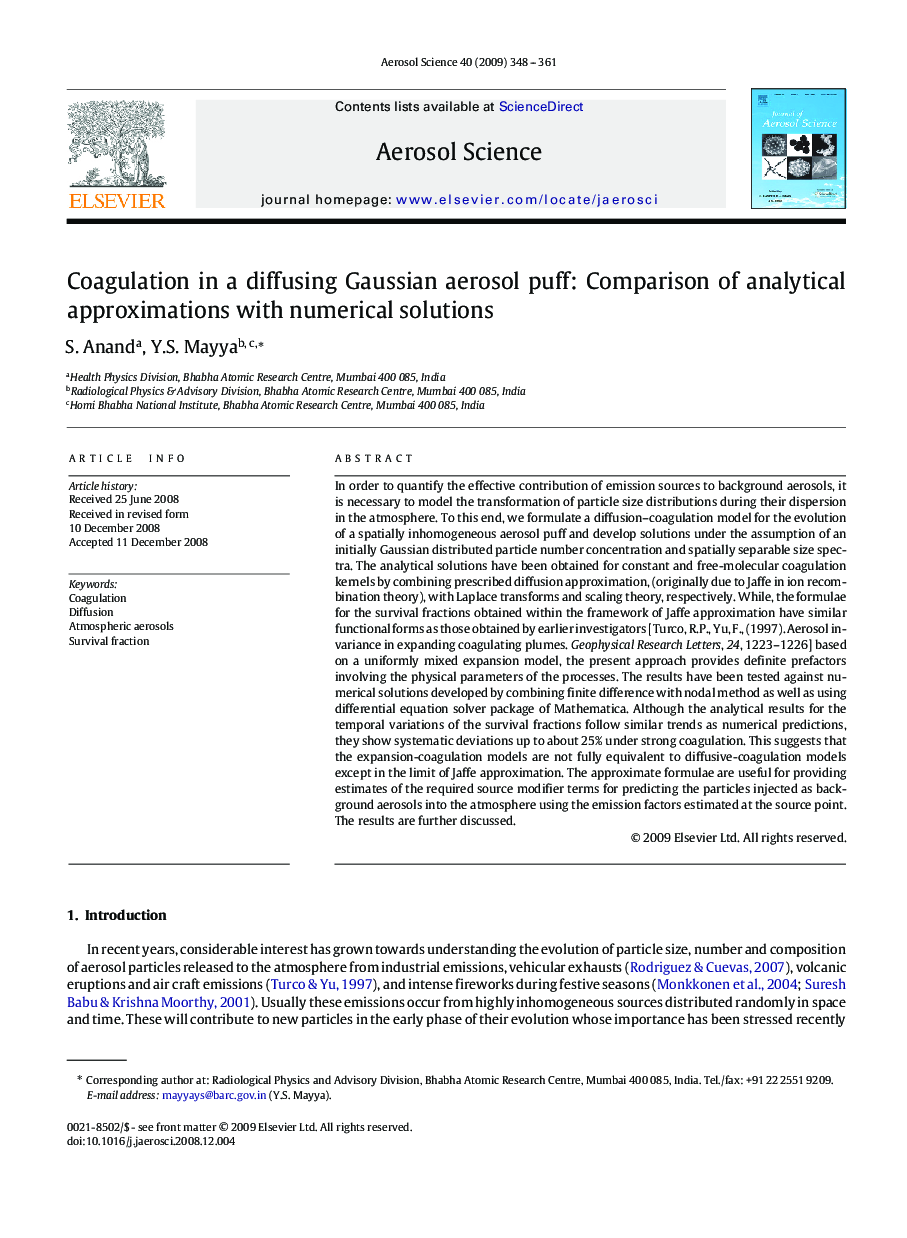| Article ID | Journal | Published Year | Pages | File Type |
|---|---|---|---|---|
| 4453062 | Journal of Aerosol Science | 2009 | 14 Pages |
In order to quantify the effective contribution of emission sources to background aerosols, it is necessary to model the transformation of particle size distributions during their dispersion in the atmosphere. To this end, we formulate a diffusion–coagulation model for the evolution of a spatially inhomogeneous aerosol puff and develop solutions under the assumption of an initially Gaussian distributed particle number concentration and spatially separable size spectra. The analytical solutions have been obtained for constant and free-molecular coagulation kernels by combining prescribed diffusion approximation, (originally due to Jaffe in ion recombination theory), with Laplace transforms and scaling theory, respectively. While, the formulae for the survival fractions obtained within the framework of Jaffe approximation have similar functional forms as those obtained by earlier investigators [Turco, R.P., Yu, F., (1997). Aerosol invariance in expanding coagulating plumes. Geophysical Research Letters, 24, 1223–1226] based on a uniformly mixed expansion model, the present approach provides definite prefactors involving the physical parameters of the processes. The results have been tested against numerical solutions developed by combining finite difference with nodal method as well as using differential equation solver package of Mathematica. Although the analytical results for the temporal variations of the survival fractions follow similar trends as numerical predictions, they show systematic deviations up to about 25% under strong coagulation. This suggests that the expansion-coagulation models are not fully equivalent to diffusive-coagulation models except in the limit of Jaffe approximation. The approximate formulae are useful for providing estimates of the required source modifier terms for predicting the particles injected as background aerosols into the atmosphere using the emission factors estimated at the source point. The results are further discussed.
